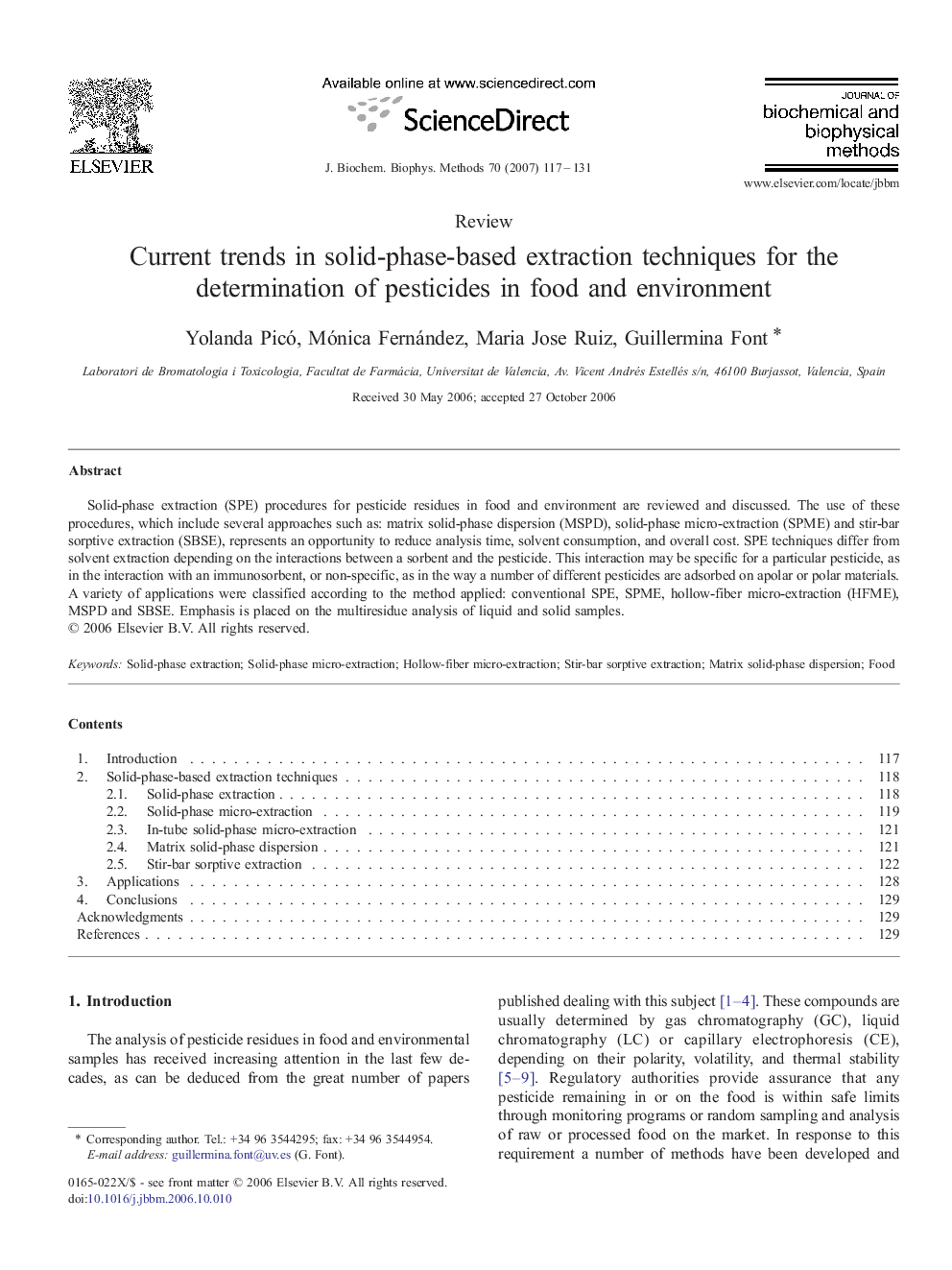| Article ID | Journal | Published Year | Pages | File Type |
|---|---|---|---|---|
| 1988565 | Journal of Biochemical and Biophysical Methods | 2007 | 15 Pages |
Solid-phase extraction (SPE) procedures for pesticide residues in food and environment are reviewed and discussed. The use of these procedures, which include several approaches such as: matrix solid-phase dispersion (MSPD), solid-phase micro-extraction (SPME) and stir-bar sorptive extraction (SBSE), represents an opportunity to reduce analysis time, solvent consumption, and overall cost. SPE techniques differ from solvent extraction depending on the interactions between a sorbent and the pesticide. This interaction may be specific for a particular pesticide, as in the interaction with an immunosorbent, or non-specific, as in the way a number of different pesticides are adsorbed on apolar or polar materials. A variety of applications were classified according to the method applied: conventional SPE, SPME, hollow-fiber micro-extraction (HFME), MSPD and SBSE. Emphasis is placed on the multiresidue analysis of liquid and solid samples.
